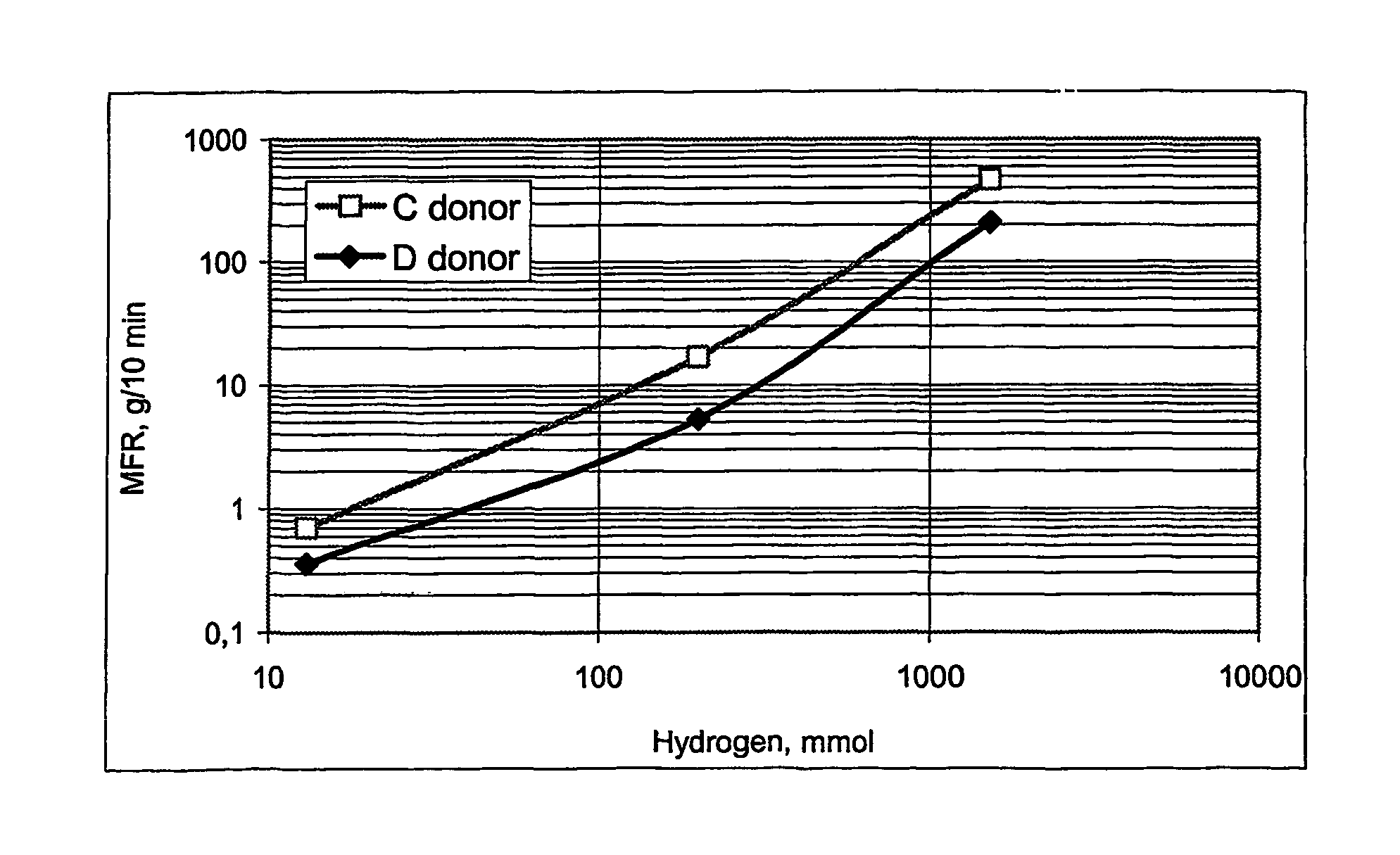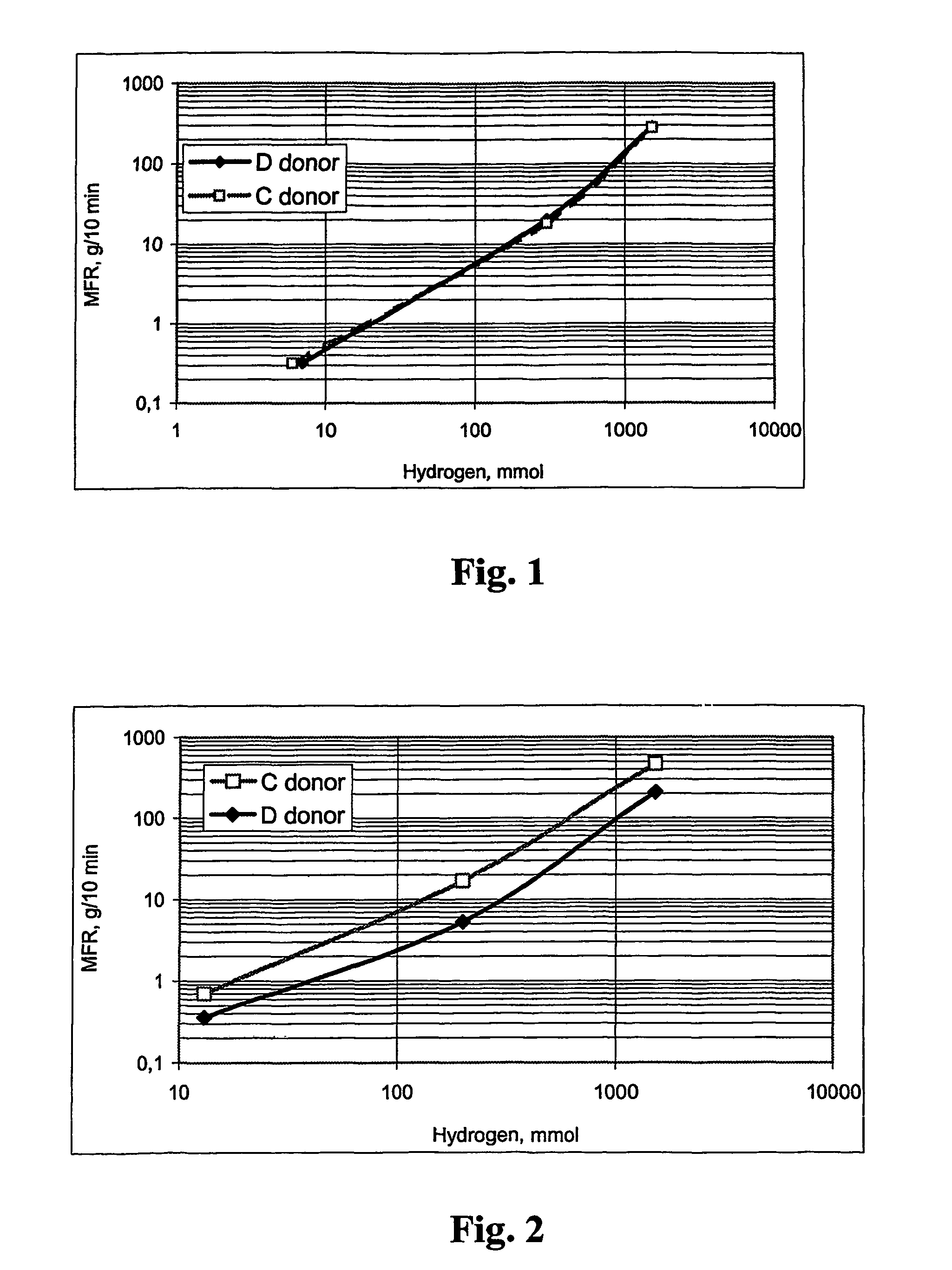Process for producing olefin polymers
a technology of olefin polymer and process, applied in the field of olefin polymerization, can solve the problems of high production cost, time and cost, and difficulty in changing from one grade to another, and achieve the effects of reducing production rate, good control, and fast and easy control of the overall process
- Summary
- Abstract
- Description
- Claims
- Application Information
AI Technical Summary
Benefits of technology
Problems solved by technology
Method used
Image
Examples
example 1a
[0085]All raw materials were essentially free from water and air and all material additions to the reactor and the different steps were done under inert conditions in nitrogen atmosphere. The water content in propylene was less than 5 ppm.
[0086]The polymerization was done in a 5 litre reactor, which was heated, vacuumed and purged with nitrogen before taken into use. 348 μl TEA (triethyl aluminium from Witco used as received) as cocatalyst, 51 μl donor C (cyclo hexyl methyl dimethoxy silane from Wacker, dried with molecular sieves) and 30 ml pentane (dried with molecular sieves and purged with nitrogen) were mixed and allowed to react for 5 minutes. Half of the mixture was added to the reactor and the other half was mixed with 17.2 mg highly active and stereospecific Ziegler Natta catalyst (ZN catalyst). The ZN catalyst was prepared according to WO03 / 000754, example 7 and had Ti content 2.84 w-%. After about 10 minutes the ZN catalyst / TEA / donor C / pentane mixture was added to the rea...
example 1b
[0088]This example was carried out in accordance with Example 1a, with the exception that donor D (dicyclo pentyl dimethoxy silane) was used as external donor. The MFR of the product was 20, which is practically the same as that obtained with donor C in Example 1a. The details and results are shown in Table 1.
example 2a
[0089]This example was carried out in accordance with Example 1a, with the exception that the amount of hydrogen was 1500 mmol. The MFR was 280 g / 10 min. The details and results are shown in Table 1.
PUM
| Property | Measurement | Unit |
|---|---|---|
| size | aaaaa | aaaaa |
| size | aaaaa | aaaaa |
| Melt Flow Rate | aaaaa | aaaaa |
Abstract
Description
Claims
Application Information
 Login to View More
Login to View More - R&D
- Intellectual Property
- Life Sciences
- Materials
- Tech Scout
- Unparalleled Data Quality
- Higher Quality Content
- 60% Fewer Hallucinations
Browse by: Latest US Patents, China's latest patents, Technical Efficacy Thesaurus, Application Domain, Technology Topic, Popular Technical Reports.
© 2025 PatSnap. All rights reserved.Legal|Privacy policy|Modern Slavery Act Transparency Statement|Sitemap|About US| Contact US: help@patsnap.com


